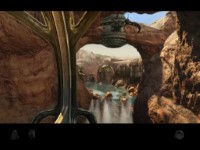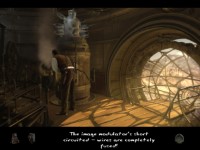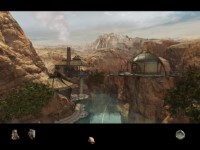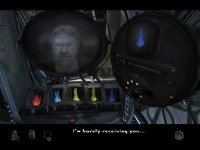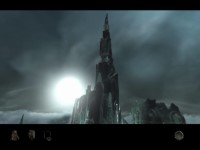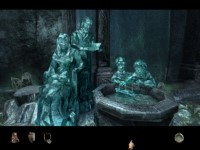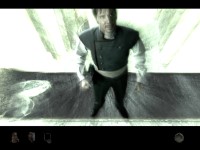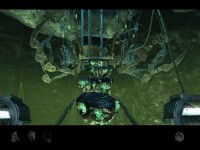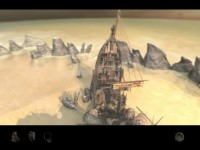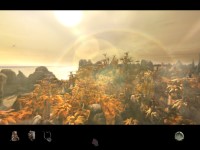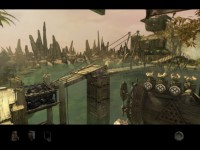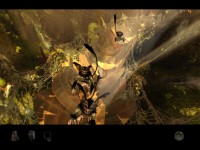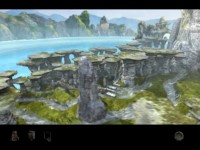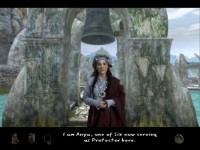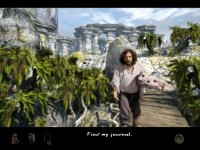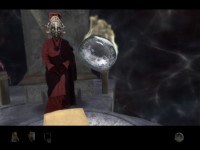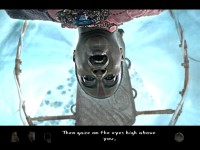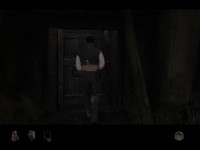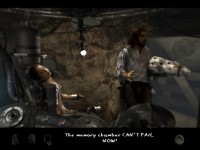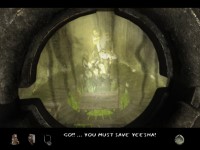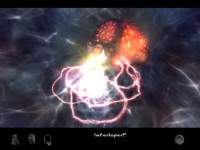Myst 4: Revelation
Playtime: 14.7 Hours
Finished 10 January 2025.Played on PC, kind of a pain to get working properly. I'm very grateful to the recently-released Myst 4 Revolution mod that adds a ton of QoL features and fixes that makes the game feel so much more playable. Also used this hint guide quite liberally at a few different parts of the game (like the Mangree ballgame on Haven) that were too obnoxious for me to deal with. Played to the good end; note that I skipped one of the optional Dream puzzles (the colored lights).
To be honest, this isn't a great puzzle game overall. While there are some cool concepts, there are too many instances in this game of very obtuse or nonsensical puzzles with poor control behavior. For example, the famous Haven Mangree puzzle involves using the cursor to spin horns of varying sound frequencies for different amounts of time in order to excite specific monkeys to move. And you have to do this ~10 times in the right sequence, not to mention the control scheme is very finicky. That's probably the biggest shortcoming of this game - instead of just requiring you learn the concept of the puzzle as in the other games, this game will push even further and force you to waste a ton of extra time doing absurdly long puzzles with them in the name of difficulty.
I also feel like this game goes a bit too far in hiding what objects in a scene are interactible. Myst & Riven originally had pretty clear signs of which buttons or panels would be touchable at any given time. There were some exceptions of course, but in most cases the visual design was simple enough (due to technological limitations) that there wasn't much ambiguity. Myst 3 was much worse with regards to this, particularly on Edanna, yet constructed scenes in such a way that very distinct features usually formed the core of the puzzles. Myst 4 is horrible with this; very frequently throughout the game, I found myself wondering what the heck I could actually interact with as the scenes feel so unnecessarily cluttered, with controls unnecessarily hidden away. Comparing this to something like the Talos Principle, which provides all of your resources directly in front of you, I find it very easy to see how much of the challenge is artificial, based on how annoying it is to find out what you are allowed to do rather than how challenging the puzzle is to begin with.
The game is also just generally clunky overall, which is why I used the M4Revolution mod to begin with. The slow cursor animations and even slower screen transitions by default make for a horrible experience when navigating around the world, and would never have a place in any of these games. There's also a huge variance in step size between different scenes unlike the previous games - sometimes a single step will take you just a couple of feet away, other times it warps you all the way down a long walkway. The first time running through any area was always hugely disorienting for me as movement never felt consistent. One redeeming factor against all of this is your ability to tap pretty much any surface in the game. It's not really a functional feature since it's not used for any puzzles, but it's cool that they actually mapped out a ton of different surface types for every scene.
As for the story and scenery of the game, I don't think it was necessary at all and didn't like the nonsensical retconning of the Prison Books, yet it did end up bringing proper closure to Sirrus & Achenar. I thought it was really cool to see how their personalities developed over time, as Sirrus's isolation alongside his scheming personality pushed him further into psychopathy, while Achenar's wild nature was calmed down, learning to eventually live in harmony with nature and understanding the ecosystem he became a part of. Viewing the ways in which he grew through the visions and journals hidden on Haven was quite heartwarming - although with the difference between Sirrus's and Achenar's arcs being so starkly different, it's pretty obvious who to trust on Serenia. Overall, I thought Spire and Haven were pretty cool thematically, despite my issues with some of the puzzles. Also, this ends up actually opening another issue with Gehn, as the prison book of Riven functioned consistently with the original interpretation of the Myst Prison books but not this new rendition. The entire idea feels like it was conceived by someone not really attached to, or interested in the story of the books.
Serenia is another can of worms, though. It's cool visually, and some of the earlier puzzles are also pretty well done. However, the entire concept of the spirit mediums and the dream world just feel a bit off in a series that otherwise tries to stay grounded in a pretty consistent reality, particularly with all the random prophesizing. It doesn't help that the Dream puzzles both suck terribly - legitimately some of the absolute worst puzzles in the entire series up to this point. Plus, the way that Serenia's puzzles integrated the final hints of Spire & Haven feels really hamfisted. Myst and Exile gave you very explicit motivations for visiting and thoroughly exploring the worlds available to you, but the Stranger doesn't have much reason (other than curiosity, maybe) to actually link to the prison worlds - the player really only does that because there's nothing else to do, and because there are two of them. You don't even learn about the snake or the color combination until the very end of the respective worlds anyway.
I think I more or less enjoyed the experience of Revelation, but I don't think I'd be interested in playing through this again. It doesn't feel like it pays proper respects to the previous entries, and instead feels more like a concept some suit thought up to capitalize on the nostalgia of re-introducing the two brothers back into the series. Even if I don't hate the way their characters were written here, I think it would have been better overall to leave their fate ambiguous instead.
